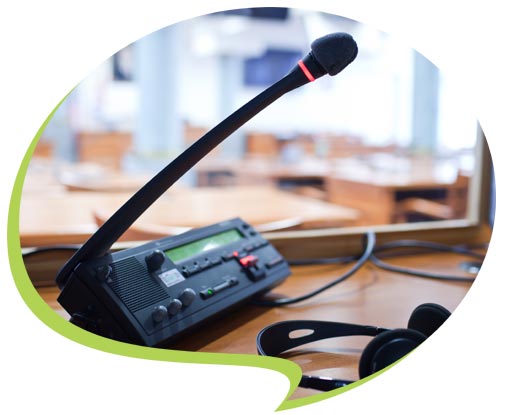Conference Interpreter
Fluency in both source and target languages is the result of thorough preparation (specific terminology, technical vocabulary, general knowledge) as well as substantial experience in the three main styles of interpreting:
Simultaneous conference interpreting for international organisations, European institutions, international businesses, SMEs and associations.
Consecutive interpreting on stage at film festivals, book fairs, award ceremonies, training courses, interviews and press conferences.
Whispering during site visits, trade shows, training courses, gala dinners and sporting events.







